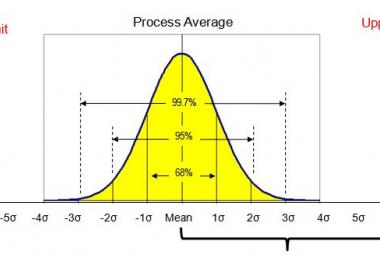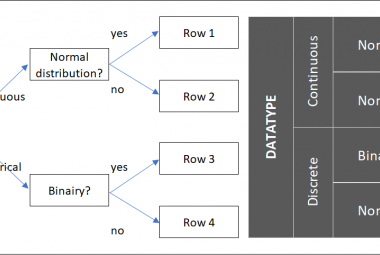What elements influence organizational change? Dr. Mary Lippitt (1987) developed a model for complex change with 5 key elements: Vision, Inscentives, Resources Skills and plan. In this article, Lippitt´s ´Incentives´ is replaced by commitment, because commitment can be seen as the result of good incentives and is mentioned in many books, articles and internet fora as the one factor that influences cultural change the most.
There are multiple books and articles which stress the importance of the five key elements of change, especially on Vision and (management) commitment (Rother (2010), Liker (2004), Suzaki (1993). Three years ago, I thought these elements self-evident, because they were present in the first factory I came to work in. I have learned however, that these elements are not as self-evident as I thought and sometimes even lack in an organization, influencing the Lean implantation in a bad way.
The first step for successful change is having a VISION. If you do not know where you want to go, how can you define the right improvement steps to get there? Authors like Rother (2010), Liker (2004), Suzaki (1993) all describe the importance of defining the Vision as the first step towards cultural change. Again, this might seem self-evident, but I had the pleasure of meeting a Management team once who came to us because they had problems ´implementing lean´. When I asked what their definition of Lean was, what their vision was, they all gave different answers. If there is no consensus on what Lean is supposed to bring you as an organization, how can you know it was a success or a failure?
The second element of successful change is COMMITMENT, which is the result of creating the right incentives. When a company decides to use a certain philosophy to guide cultural change, like Lean, it is important to act on that decision as well and make it more than just empty words. In his traditional 8 steps for change, Kotter (1996) describes the importance of communication the vision throughout the organization to create consensus. Commitment also means giving the right example, to ´walk the talk´, which in Lean terms means making your daily or weekly kamishibai rounds and Gemba walks (Mann, 2005).
Important in the Lean philosophy is the commitment to solve problems preventatively instead of correctively (Webers, 2010). Only when management acts on the vision of continuous improvement, real cultural change can happen.
When you know where you want to go, you need RESOURCES to get there. Resources can be described in different forms. First, one needs time. If you think you can create cultural change with one person who can spend 2 days a week on it, forget it. In my first position as Lean deployment manager in a factory with 200 people, we spent 3 years of coaching and facilitating with two people fully available for the Lean transformation and we were still not close to being finished with improving our processes and encouraging our colleges to focus on improving their own processes.
Lean also has everything to do with bottom-up improvement, which means that employees should have the time to focus on improving their own working routines. In each department where we implement the Lean foundation (Lean house for the Shop-floor), we organized monthly workshops in which representatives of each shift are available to work on improvements that whole day, instead of working a shift in production. A third example of necessary time is the time engineering and technical staff need to implement improvement suggestions (kaizen) production employees made without being able to implement them themselves.
Next to time, financial resources are necessary to implement suggestions for improvement. Nothing is more frustrating for employees than hearing your idea will not be implemented because it is too expensive. Unfortunately, the budget will never be sufficient and there will always be the need for determining priority to determine which improvements are implemented and in what sequence that will be done.
The fourth element for successful change is SKILLS. Especially in the Lean philosophy, the amount of lean Tools which can help you make your department work more efficient are numerous. Without the skills to use these tools, fear and insecurity will exist among the people, who are supposed to use the tools for improving their own processes, which will obstruct the flow of improvements.
As Kotter (1996) describes in his 8 step model for change, one should focus on generating measurable results as quick as possible, to show the people that the new strategy (and Vision) is the right one. For that, one needs skilled people to choose the right tools for your specific situation and teach colleagues how to use the tool to their advantage.
Finally, a PLAN is needed to determine what actions are defined to reach the vision, what Rother (2010) describes as the Improvement Kata, and what tools are needed to optimize a specific Value Stream. Choose the right KPIs based on behavior (leading indicators) to measure if people are spending their time optimally and a few results based indicators (lagging Indicators) to check of the plan does indeed lead to improvements which are defined in the vision (Webers, 2010). More info about these KPI´s can be found in the article about Hoshin Kanri.
Facilitating cultural change is one of the hardest things there is, because human behavior does not easily change. By focusing on the five elements described in this article, Vision, Commitment, Resources, Skills and Plan, a few of the most common mistakes made can be avoided to make the change process more smooth.
Interested in Lean basics?
Continue To:
REFERENCES:
Kotter, J.P., 1996, Leading Change, USA: Harvard Business School Press.
Liker, J., 2004, The Toyota Way, 14 management principles from the world greatest manufacturer New York: Mc-Graw Hill (summary / order this book)
Lippitt, M., 1987, The Managing Complex Change Model. Copyright, 1987, by Dr. Mary Lippitt, Founder and President of Enterprise Management, Ltd
Mann, D.,2005, Creating a Lean Culture - Tools to sustain Lean Conversions, New York: Productivity Press. (summary / order this book)
Rother, M., 2010. Toyota Kata: Managing people for Improvement, Adaptiveness an Superior Results, New York: Mc-Graw Hill (summary / order this book)
Suzaki, K., 1993, The New Shop Floor Management, empowering people for continuous improvement New York : Free Press (order this book)
Webers, N.C.W., 2010, Performance Behaviour – De Lean Methode voor het Continue Verbeteren van Prestatiegedrag, Den Haag (NL): Sdu uitgevers (summary)












